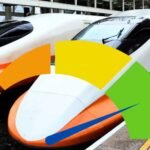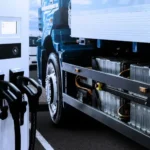Traffic congestion, a daily reality in urban areas globally, has become a pervasive issue with multifaceted implications. Beyond being a source of inconvenience, traffic congestion affects economic productivity, environmental sustainability, and city dwellers’ overall quality of life. This comprehensive exploration delves into the root causes, contributing factors, repercussions, recent innovations, and potential solutions to this intricate and widespread challenge.
Understanding Traffic Congestion
At its core, traffic congestion manifests when transportation demand exceeds the existing infrastructure’s capacity. This imbalance results in slower speeds, extended travel times, and an overall reduction in road network efficiency. The causes of congestion vary, from population growth and urbanization trends to inadequate infrastructure development and individual travel behaviors.
Causes and Contributing Factors
Population growth and urbanization dynamics play a pivotal role in exacerbating congestion. As cities expand, the demand for transportation often outstrips the pace of infrastructure development. Inadequate road capacity, poorly designed intersections, and a dependency on private vehicles further contribute to bottlenecks and traffic backups, intensifying congestion issues.
Repercussions of Traffic Congestion
The consequences of traffic congestion extend beyond the immediate inconvenience experienced by commuters. Economically, congestion imposes significant costs, including productivity losses, increased fuel consumption, and delayed deliveries. Environmental repercussions are evident in heightened air pollution and greenhouse gas emissions, which impact air quality and contribute to climate change. Moreover, the stress and frustration induced by congestion negatively affect residents’ overall well-being and quality of life.
Key Components of Traffic Management
Effectively addressing traffic congestion necessitates strategic traffic management. Several key components are instrumental in this endeavor:
Intelligent Transportation Systems (ITS)
Intelligent Transportation Systems (ITS) leverage advanced technology, including traffic sensors, cameras, and sophisticated algorithms, to monitor and manage real-time traffic flow. Adaptive traffic signal control, variable message signs, and dynamic lane management are pivotal elements of ITS that contribute to more efficient traffic management.
Public Transportation Integration
A crucial aspect of traffic management involves integrating and enhancing public transportation options. Strengthening and expanding public transit provides commuters with viable alternatives to private vehicle use, thereby reducing the overall demand on road networks.
Infrastructure Investment and Expansion
Investments in expanding and improving road infrastructure form a foundational strategy for mitigating congestion. It includes the development of additional lanes, smart highways, and efficient intersections to address capacity issues and enhance overall traffic flow.
Traffic Demand Management
Proactive traffic demand management strategies, such as congestion pricing, carpool lanes, and flexible work hours, aim to distribute traffic more evenly throughout the day. These measures reduce peak-hour congestion and promote a more balanced utilization of transportation infrastructure.
Recent Innovations in Traffic Management
Innovations in technology and urban planning present promising solutions to the challenge of traffic congestion:
Connected and Autonomous Vehicles
Integrating connected and autonomous vehicles into traffic management systems holds immense promise. Such vehicles, through their ability to communicate with each other and with infrastructure, have the potential to optimize traffic flow, reduce bottlenecks, and enhance overall road efficiency.
Mobility as a Service (MaaS)
Mobility as a Service (MaaS) platforms offer an integrated approach to transportation. These platforms enable users to plan, book, and pay for various modes of transportation seamlessly, encouraging a shift away from private vehicle ownership and alleviating congestion.
Data Analytics for Traffic Prediction
The advent of advanced data analytics and machine learning algorithms allows for accurate prediction of traffic patterns. This capability enables proactive traffic management, optimizing transportation systems in response to real-time data and enhancing overall efficiency.
Smart Traffic Signal Systems
Smart traffic signal systems leverage real-time data to adjust signal timings dynamically. This adaptive approach optimizes traffic flow, reduces congestion at intersections, and contributes to a more efficient and responsive traffic management system.
Potential Solutions for Traffic Congestion
Effectively addressing traffic congestion involves a combination of short-term and long-term solutions:
Investing in Public Transportation
Significant public transportation infrastructure and services investments are key to encouraging a modal shift. By providing citizens with accessible and efficient public transit options, cities can reduce the reliance on private vehicles and alleviate congestion.
Sustainable Urban Planning
Adopting sustainable urban planning practices plays a vital role in mitigating congestion. These include developing mixed-use developments, implementing bike lanes, and creating pedestrian-friendly spaces to reduce dependence on private cars.
Encouraging Telecommuting and Flexible Work Arrangements
Promoting telecommuting and flexible work arrangements reduces congestion by reducing the number of vehicles on the road during peak hours. This approach aligns with changing work dynamics and supports a more balanced use of transportation infrastructure.
Implementing Congestion Pricing
Congestion pricing involves charging vehicles to enter congested areas during peak hours. This strategy incentivizes alternative transportation modes, distributes traffic more evenly, and effectively addresses congestion in various urban areas.
Future Trends in Traffic Management
The future of traffic management holds exciting possibilities as technology continues to evolve:
Vehicle-to-Everything (V2X) Communication
The integration of Vehicle-to-Everything (V2X) communication allows vehicles to communicate with each other and with infrastructure. This enhanced coordination can optimize traffic flow, reduce congestion, and improve road safety.
Hyperloop and High-Speed Transportation
Innovations like the Hyperloop and high-speed transportation systems promise to revolutionize long-distance travel. By providing faster and more efficient alternatives, these technologies have the potential to alleviate congestion on traditional roadways.
Sustainable Transportation Modes
The future envisions a shift towards sustainable transportation modes, including electric and autonomous vehicles, bicycles, and walking. Embracing these modes reduces the overall environmental impact of commuting and contributes to congestion reduction.
Urban Air Mobility
The emergence of urban air mobility involving electric vertical takeoff and landing (eVTOL) vehicles could provide an alternative transportation method, especially in densely populated urban areas. This futuristic mode has the potential to transform urban mobility and reduce congestion on traditional road networks.
Conclusion
Traffic congestion, while a persistent challenge, is not impossible. Through technological innovations, strategic urban planning, and sustainable transportation solutions, cities can work towards alleviating congestion and creating more efficient, resilient, and livable urban environments. As research and development continue to shape the future of traffic management, there is optimism that congestion can be managed effectively, unlocking a smoother and more sustainable future for urban mobility.










